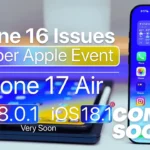Troubleshooting Driver Problems in Windows
Driver problems can lead to various issues on your Windows computer, such as hardware malfunctions, system instability, or device connectivity problems. These problems can occur due to outdated drivers, incompatible software, or conflicts between different drivers. In this article, we will guide you through troubleshooting steps to address driver problems and ensure smooth operation of your devices in Windows.
1. Identify Problematic Devices:
– Open the Device Manager by pressing Windows key + X and selecting “Device Manager” from the menu.
– Look for any devices with a yellow exclamation mark or a red “X” icon next to them.
– These symbols indicate that there is a driver issue or the device is not functioning correctly.
2. Update Drivers:
– Right-click on the problematic device in the Device Manager and select “Update driver.”
– Choose the option to automatically search for updated driver software.
– If Windows fails to find a suitable driver, visit the manufacturer’s website for your device and download the latest driver.
– Install the driver manually by selecting the “Browse my computer for drivers” option and navigating to the downloaded driver file.
3. Roll Back Drivers:
– If you recently updated a driver and started experiencing issues, you can roll back to the previous version.
– In the Device Manager, right-click on the problematic device and select “Properties.”
– Go to the “Driver” tab and click on the “Roll Back Driver” button if it is available.
– Follow the on-screen instructions to revert to the previous driver version.
4. Uninstall and Reinstall Drivers:
– In the Device Manager, right-click on the problematic device and select “Uninstall device.”
– Confirm the uninstallation and check the box that says “Delete the driver software for this device” if it appears.
– After uninstalling the driver, restart your computer.
– Windows will automatically attempt to reinstall the driver. If it fails, you can follow step 2 to install the latest driver manually.
5. Use Driver Management Software:
– Third-party driver management software can help automate driver updates and identify outdated or incompatible drivers on your system.
– Research and choose a reputable driver management tool, and follow its instructions to scan and update drivers.
6. System Restore:
– If driver problems started occurring recently, you can use the System Restore feature to revert your system to a previous working state.
– Open the Control Panel and search for “System Restore.”
– Follow the prompts to choose a restore point before the driver issues started and initiate the system restore process.
7. Seek Manufacturer Support:
– If you have exhausted all troubleshooting options and are still experiencing driver problems, it’s recommended to contact the device manufacturer’s support.
– Visit their website or contact their customer support for guidance or possible driver updates specific to your device.
Conclusion:
Driver problems can significantly impact the functionality of devices connected to your Windows computer. By following the troubleshooting steps outlined in this article, you can identify and resolve common driver issues. Regularly updating drivers and keeping them compatible with your system will help ensure optimal performance and stability. If you encounter persistent driver problems or complex issues, seeking assistance from the device manufacturer or consulting a technical expert may be necessary.







